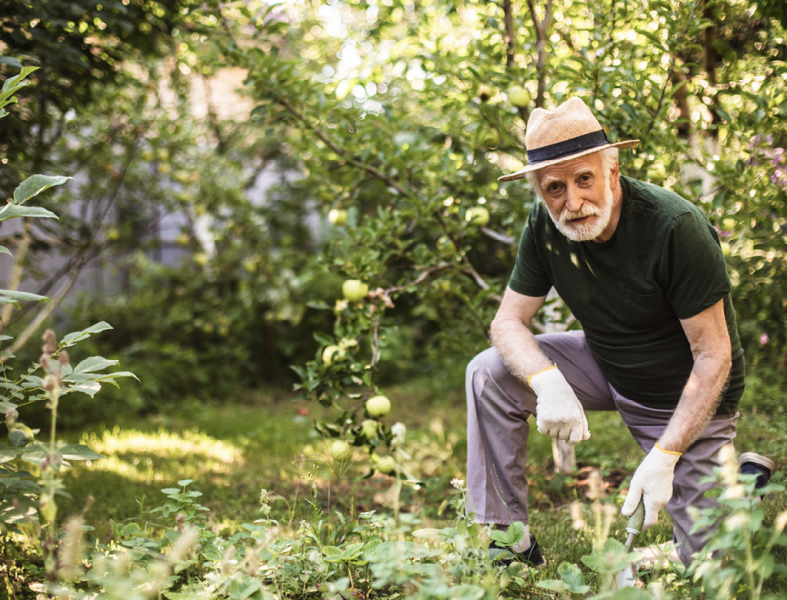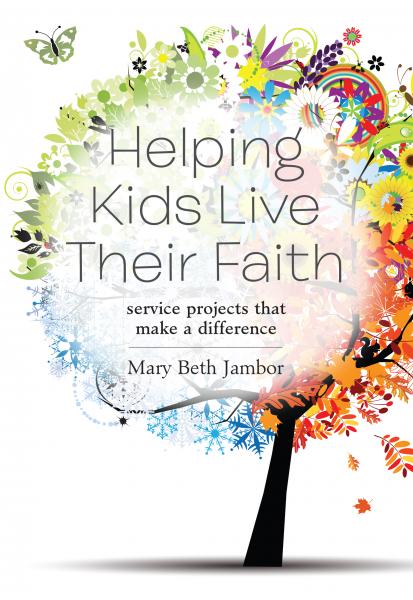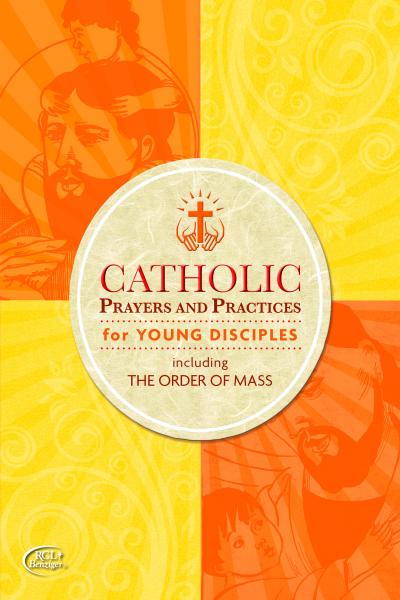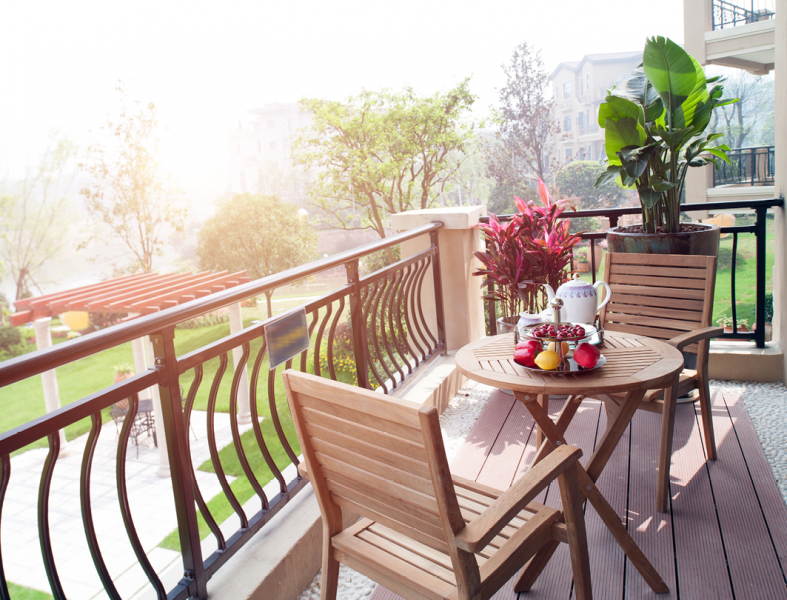Most writers and presenters have favorite stories or folktales they like to share with others. One of mine involves a pastor who decided to hire a gardener for the poorly kept parish grounds.
Year-round, the wizened gardener worked diligently, preparing the soil, weeding, planting, pruning, and nurturing the plants with great attention. One fine day, the pastor strolled out into the flowering wonderland with a neighboring priest, anxious to show off the magnificent new creation.
 Gesturing to the many different plants and flowers, the pastor said, “I praise God for all of his handiwork!”
Gesturing to the many different plants and flowers, the pastor said, “I praise God for all of his handiwork!”
With clippers in hand, the gardener stepped out from behind a bush and chastised the pastor, saying, “Don’t you go giving all the credit to God! Just remember what this place looked like before I got here and God had it all to himself!”
At an educator’s conference, I used this story to stress the importance of the work Catholic educators do on God’s behalf, preparing the soil, planting seeds of faith, and nurturing their growth as co-creators with God.
But I’ve realized the story has another lesson: You tell the world what—and who—you love by giving your attention.
Henry Miller wrote, “The moment one gives close attention to anything, even a blade of grass, it becomes a mysterious, awesome, indescribably magnificent world in itself.”
Imagine the change that would take place in our lives if we gave that kind of attention to other people; if we listened when they talked, if we remembered what they liked and disliked, discerned what they needed, and were as present to them as we are to our favorite pastimes.
In an April meditation in which he reflected on the coronavirus in light of Jesus’ Resurrection, Pope Francis spoke about the strength of the women who followed Jesus, reminding us that they found ways to overcome all obstacles simply “by being and accompanying.”
This kind of presence is not always easy, especially during times that challenge us mentally and physically, but it is possible when we open ourselves to the work of the Holy Spirit.
The Holy Father encourages us to remember it is “the breath of the Spirit that opens horizons, sparks creativity and renews brotherhood and makes us say, ‘I’m present’ in the face of the enormous and urgent task that awaits us.”
Still, there are days when I honestly feel like I don’t have the energy to give attention to anything or anyone, even myself. Through prayer I’ve learned to give myself the time I need to be restored, and am encouraged by words attributed to Mother Teresa which remind me that even the smallest of efforts can make a difference: “I don’t have to change the world all by myself, but I can cast a stone across the water to create many ripples.”
Mary Regina Morrell is a Catholic journalist, author, and syndicated columnist who has served the dioceses of Metuchen and Trenton, New Jersey, and RENEW International in the areas of catechesis and communication.
Product Suggestion
Praying the Scriptures
 Catechists, religion teachers, and parents will find a wealth of resources designed to help them lead others in learning and reflecting on the Sunday Scriptures in the classroom and in the home. Classroom Sessions provide catechists and religion teachers with background on the Sunday readings as well as classroom session plans for primary, intermediate, and junior high students. Gospel Reflections for each Sunday and major feast days include Reflections for Families and Discussion Starters. Questions of the Week for adults and children, in English and in Spanish, are perfect for use in parish bulletins or school newsletters, and as faith-sharing discussion starters about the Sunday readings. A liturgical year calendar is also offered for ease of reference.
Catechists, religion teachers, and parents will find a wealth of resources designed to help them lead others in learning and reflecting on the Sunday Scriptures in the classroom and in the home. Classroom Sessions provide catechists and religion teachers with background on the Sunday readings as well as classroom session plans for primary, intermediate, and junior high students. Gospel Reflections for each Sunday and major feast days include Reflections for Families and Discussion Starters. Questions of the Week for adults and children, in English and in Spanish, are perfect for use in parish bulletins or school newsletters, and as faith-sharing discussion starters about the Sunday readings. A liturgical year calendar is also offered for ease of reference.
Praying with Scriptures is now available on Flourish! This downloadable, lectionary-based resource is designed to support catechists, religion teachers, and parents who lead others in learning and reflecting on the Sunday Scriptures in the classroom and in the home.
What could you do to encourage someone who is feeling hurt?
by Mary Sellars Malloy“There is a balm in Gilead to make the wounded whole. There is a balm in Gilead to heal the sin-sick soul” (Traditional Spiritual). I’m humming this to myself this morning as I consider the question. For a balm is something that has a healing, restorative effect.
Throughout the pandemic, we’ve witnessed many varied examples of applying healing balm to those with anxious hearts, living in fear. Drive-by processions on birthdays, emails and letters to nursing home residents, concerts from the back of pick-up trucks, green and blue lights in our windows, and church bells ringing in chorus every afternoon are but a few examples.
In addition to these physical acts that help heal the hurts of this time, we who profess faith in Jesus the Healer possess the powerful balm of prayer. Our pattern of prayer—for the world and its leaders, for the Church and her leaders, for those in need, and for the sick and dying—calls for the pouring of the healing balm of Gilead upon all, including ourselves. Every day we have the power to heal the hurts by being faithful in prayer. Pope Francis says it simply: “Prayer makes miracles” (January 2016).
During the stay-at-home weeks, I’ve been encouraged by phone calls, letters, surprise packages in the mail, and surprise gifts at my door, but one of the most memorable gifts of encouragement was given to me when, at the end of a phone conversation, a friend simply asked, “And how might I pray for you?”
Mary Sellars Malloy has over forty years’ experience as a Catholic educator and lay minister. She is a frequent workshop presenter on the topics of prayer, liturgy, spirituality, the Sacraments, and the RCIA. In addition, Mary leads retreats and parish missions throughout the country. Her goal is to encourage Catholics of all ages to appreciate and to live their Catholic faith.
Product Suggestion
Our Family Prays
 Our Family Prays is a collection of rituals, blessings, prayers, and traditions to encourage and inspire Catholic families to keep prayer at the heart of their home. It is organized by the seasons of the liturgical year and includes Catholic traditions and celebrations from around the world.
Our Family Prays is a collection of rituals, blessings, prayers, and traditions to encourage and inspire Catholic families to keep prayer at the heart of their home. It is organized by the seasons of the liturgical year and includes Catholic traditions and celebrations from around the world.
I’ll be completely honest and admit that one of the things I miss most about celebrating Mass in the church building is watching the children.
If there is anything that will bring a smile to my heart it’s the antics of young children doing what they consider their best to get through an hour of confinement with adults talking at them and no opportunity to talk back.
Having managed to get through many years of Masses with six children in tow, I fully appreciate my vantage point from the choir loft. Believe me, I’ve seen it all.
But nothing tops the Sunday when a young family with several young children took their place in one of the first pews, visible to both the entire assembly and the presider. Their first tactical error was seating their most gregarious child in the most coveted end-of-pew seat, providing him with ease of escape.
 I noticed as they entered that this little boy, maybe five years old, was carrying rosary beads in his hands. I winced a bit, remembering even rosary beads can be an unintended weapon in the hands of a young child.
I noticed as they entered that this little boy, maybe five years old, was carrying rosary beads in his hands. I winced a bit, remembering even rosary beads can be an unintended weapon in the hands of a young child.
The Mass began, and at first the young boy was fine, running the beads in and out of his hands as if he were actually praying. But before long, he discovered the “rosary bead spin.” Propelled by the weight of the crucifix, the beads circled faster and faster in his rotating hand.
Suddenly, he jumped out into the aisle with what looked like a small propeller in his little fist and yelled, “Hang on Jesus, we’re going for a ride!”
It was priceless! A delighted laugh rolled through the assembly and even the presider laughed out loud.
On the way home from Mass, with a foolish grin on my face, I considered how the whole scene was like a metaphor for our daily lives. With so many ups and downs, and things often spinning out of control, any of us could be the one yelling, “Hang on, Jesus!”
That memorable incident happened years ago. Today, during a time of incredible challenges which seem to grow exponentially every day, we are more likely to be asking Jesus to help us hold on as life seems to be spinning out of control.
It took a lot of prayer and spiritual growth to understand that’s exactly what God does – makes it possible for us to hold on. God doesn’t always make things better. But the Spirit of God is our strength, our courage, our wisdom and understanding, making all things possible – even hanging on when life takes us on the most challenging ride of our lives.
There are many Scripture verses that encourage us to find our strength in God, but one that I have come to rely on is one that I learned as a child, Psalm 23. I memorized it when I was young, never realizing how powerful the first line would be in all the most difficult times of my life:
“The Lord is my shepherd.”
Product Suggestion
Catholic Prayers and Practices
Build, Strengthen, and Celebrate Catholic Identity!
Utilize this handy, portable guide for learning, celebrating, or referencing the prayers and practices of the Catholic faith in English, Spanish, French, Bilingual — Spanish/English, and Bilingual — Polish/English.
- Special editions available for young disciples.
- Each edition also includes The Order of Mass and the Rite of Penance.
- Makes a great gift for catechists, teachers, those in the RCIA, Confirmation sponsors, and more!
What does it mean for you right now to be bread for others as Jesus was?
by Mary Sellars MalloyFirst of all, if you are now able to worship with your parish community, isn’t it wonderful to be able to once again be a part of the procession to the Table of the Lord and receive the Body and Blood of Christ? What a Lent and Easter fast we’ve had from this most precious gift of Jesus! This solemnity is most certainly a day to express our gratitude to him for the lifegiving gifts of his Body and his Blood.
 Even though we have come through or are still coming through a long fast from the Eucharist, this is also a day to reflect on the many ways we have been fed by the bread of others’ generosity, thoughtfulness, prayers, and support during the pandemic. I think of three friends who sewed hundreds of masks for healthcare workers, chemotherapy patients, and clinic staff members. And there’s the crafty friend who made joyful Easter bunnies, delivering them to friends’ doorsteps to bring Easter cheer.
Even though we have come through or are still coming through a long fast from the Eucharist, this is also a day to reflect on the many ways we have been fed by the bread of others’ generosity, thoughtfulness, prayers, and support during the pandemic. I think of three friends who sewed hundreds of masks for healthcare workers, chemotherapy patients, and clinic staff members. And there’s the crafty friend who made joyful Easter bunnies, delivering them to friends’ doorsteps to bring Easter cheer.
A new friend in Arkansas wrote that in her neighborhood, which is mostly Catholic, neighbors agreed on a time to stand in their driveways and pray the rosary for the protection of the world. In a southern community, members of a Baptist church stood on their front porches on Easter Sunday and sang “Amazing Grace.” That same morning, we opened our door to find a container of dark chocolate-covered pretzels on our doormat.
Things may still seem unsettled, frightening, or discouraging, but all around us are hopeful and uplifting examples of generosity and goodness. On this solemnity, let’s pause and ask Jesus how he is asking us to continue to “be bread”—be encouragement, be light, be of service, and be the presence of Christ to others.
Christ has no body now but yours. No hands, no feet on earth but yours. Yours are the eyes through which he looks compassion on this world. Yours are the feet with which he walks to do good. Yours are the hands through which he blesses all the world. Yours are the hands, yours are the feet, yours are the eyes, you are his body. Christ has no body now on earth but yours. Saint Teresa of Jesus (of Ávila)
Mary Sellars Malloy has over forty years’ experience as a Catholic educator and lay minister. She is a frequent workshop presenter on the topics of prayer, liturgy, spirituality, the Sacraments, and the RCIA. In addition, Mary leads retreats and parish missions throughout the country. Her goal is to encourage Catholics of all ages to appreciate and to live their Catholic faith.
Product Suggestion
Helping Kids Live Their Faith
 This book offers numerous ideas and opportunities to help children understand the importance of carrying out the Church's mission of serving their families, the community, and parish.
This book offers numerous ideas and opportunities to help children understand the importance of carrying out the Church's mission of serving their families, the community, and parish.
This small book provides practical application through service projects to model ways to live and act in faith.
- It provides service project ideas that make a difference in the faith life of the student helping them learn to put their faith into action.
- The book provides principals, DRE's, teachers, catechists, ideas for service projects so that they may provide opportunities for children to both learn about and live their faith.
- It encourages the adult to serve as a model of faith helping the children understand what it looks like to live a life of faith.
James had the heart of an artist. If I had let him, he would have spent the entire day in my preschool class drawing or painting. His art was full of color and imagination – purple trees, flying red dogs, and squirrels reading books.
One day another teacher came into the room and noticed the children making art, some creating collages and others using crayons or paint. She leaned over James’ shoulder as he was putting the final touches on his tree of many colors and reminded him, “Leaves should be green, not purple.”
 James looked up at me with a worried look on his face. I picked up his picture, smiled at him, and said to the teacher, “I think it’s absolutely wondrous!” I then proceeded to hang the picture in the middle of our art gallery wall.
James looked up at me with a worried look on his face. I picked up his picture, smiled at him, and said to the teacher, “I think it’s absolutely wondrous!” I then proceeded to hang the picture in the middle of our art gallery wall.
If I were still teaching today, I would have a picture of a rainbow squirrel, the Indian Malabar squirrel, hanging up in my classroom. Painted by the hand of the Artist in bands of purple, indigo, and orange, they are a testament to the wonder of God’s creation. I can only imagine how delighted James would have been to see something he had only imagined in his mind to actually be alive and running through the trees.
Our spiritual and religious selves are built through experiences and through wonder.
To be curious about bugs under a rock or fascinated by how water flows from a faucet over our hands are steps to learning about the world God created. Wonder leads to questions and other opportunities to learn about and appreciate the gift of creation – lessons in math, science, communication, and faith all rolled in to one.
Right now, families continue to try and navigate meeting the educational, social, and emotional needs of children, often while trying to work from home. It may help to eliminate some worry if, rather than trying to educate our children, we become co-learners and co-discoverers, inspired by their curiosity.
Many years ago, when I was studying the Montessori method of education, I read a quote from Dr. Maria Montessori that stayed with me: “When the child was very small it was enough to call him by name for him to turn around. Now we must appeal to his soul. To speak to him is not enough for this; it is necessary to interest him. What he learns must be interesting, must be fascinating. We must give him grandeur. To begin with, let us present him with the world.”
The end of every day of discovery is the perfect time for us to model for children what it means to pray for the world they live in. Grace at mealtime, prayers of gratitude for the wonders of God’s creation, love for family and friends, and healing for those who are sick or who have suffered loss are opportunities for children to develop their relationship with God and unity with others.
“Prayer,” said Pope Francis during his May 27 General Audience, “sows life —simple prayer. That's why it's very important to teach children to pray.”
He acknowledged, “It hurts when I see children and say, 'Make the sign of the cross.’… They don't know how to do it correctly. Teach them to make the sign of the cross. It's the first prayer. Children must learn to pray. Maybe they'll forget or choose a different path, but that prayer will remain in their hearts, because it's a seed of life, the seed of dialogue with God.”
Mary Regina Morrell is a Catholic journalist, author, and syndicated columnist who has served the dioceses of Metuchen and Trenton, New Jersey, and RENEW International in the areas of catechesis and communication.
Product Suggestion
Catholic Prayers and Practices for Young Disciples

Designed specifically for young learners, this new booklet will help young disciples grow in their prayer life and Catholic identity as they learn about the prayers and practices of our Catholic faith:
- Sign of the Cross in American Sign Language
- Traditional Catholic prayers
- Blessing prayers
- The Commandments and the Beatitudes
- The Rosary and the Stations of the Cross
- Sacraments
- "A Visit to Church," which provides a brief description and illustration of a baptismal font, paschal candle, ambo, altar, and crucifix
- Order of Mass
- Engaging artwork and larger font size for better readability
- Liturgical Calendar for children to color
and much more!
How could God’s mercy and love for the world be revealed through you this week?
by Mary Sellars MalloyRight where you are, today, in this moment, join me in singing, “He’s got the whole world in his hands. He’s got the whole wide world in his hands. He’s got the whole world in his hands. He’s got the whole world in his hands” (Traditional Spiritual).
Place your hands, cupped, before you, and meditate on one of the most-beloved and most-quoted Scripture promises of all time: “God so loved the world that he gave his only Son” (John 3:16).
 We’ve all come through, and are continuing to come through, a very challenging, uncertain, life-changing time. But the truth of the spiritual and the truth of the Gospel still stand. God’s got the whole world in his hands, and he so loves this world that he continues to give us the gift of his Son—Savior, Healer, Teacher, Prince of Peace, Lord, and King.
We’ve all come through, and are continuing to come through, a very challenging, uncertain, life-changing time. But the truth of the spiritual and the truth of the Gospel still stand. God’s got the whole world in his hands, and he so loves this world that he continues to give us the gift of his Son—Savior, Healer, Teacher, Prince of Peace, Lord, and King.
In the name of Jesus, as an expression of our faith in Jesus, let’s make this a week of pouring out mercy and love upon those who most need it in our corners of the world. Let’s pray with our hands cupped before us, placing into God’s hands all people who live in fear and doubt, the most vulnerable, our neighbors, our family members, our coworkers, and our friends. Let’s pour out over the world prayers for healing, restoration, and unity.
And when doubts and tiredness and discouragement fill our minds and hearts, let’s hum a truth we’ve known since childhood, “He’s got the whole world in his hands.”
Mary Sellars Malloy has over forty years’ experience as a Catholic educator and lay minister. She is a frequent workshop presenter on the topics of prayer, liturgy, spirituality, the Sacraments, and the RCIA. In addition, Mary leads retreats and parish missions throughout the country. Her goal is to encourage Catholics of all ages to appreciate and to live their Catholic faith.
What important work does Jesus ask of you at this time in your life?
by Mary Sellars MalloyThis Pentecost Sunday, one thing comes to mind: “Let the Spirit move!” Let the Spirit move in new and creative and energizing ways, for that is who the Spirit is and what the Spirit does. Recent human- interest stories in the news give witness to the ingenuity, creativity, generosity, and dedication of people like you and me who have “Let the Spirit move!” Masks sewn, tests invented, vaccines created, hospitals built, and food pantries stocked give witness to the power and presence of the Holy Spirit in the world today. And that same Spirit longs to move in our hearts and in our lives too.
 After fifty years of playing guitar, my husband recently had to give up this passion because of arthritis in his hands. Music has always been an important part of his life, so he sold his guitar and mandolin, purchased a euphonium, and joined our community band. “Let the Spirit move!” If the things of the past are no longer possible, explore new ways to enjoy doing what you love best.
After fifty years of playing guitar, my husband recently had to give up this passion because of arthritis in his hands. Music has always been an important part of his life, so he sold his guitar and mandolin, purchased a euphonium, and joined our community band. “Let the Spirit move!” If the things of the past are no longer possible, explore new ways to enjoy doing what you love best.
When I semi-retired nearly two years ago, I set up a work schedule in which I have Fridays off. Shortly thereafter I noticed that every Friday afternoon a group gathers at my local library to play mah jongg. I love that game, so I joined the group, through which I have made several new friends. “Let the Spirit move!” Pursue something that brings you joy and—when again allowed--puts you in the good company of others.
After the deaths of my parents, I began to communicate more regularly with a stepsister whom I did not know well. In doing so, I found out that we have much in common, including our love of quilting and crafting. Our conversations and shared memories of our parents have brought us closer. “Let the Spirit move!” Open your heart to conversations and relationships that will enrich your life.
Life has many seasons and adventures, including what we are experiencing as we hope for recovery from the effects of the coronavirus pandemic. Today’s question asks us to consider what Jesus asks of us at THIS TIME in our lives. Not twenty or thirty or fifty years ago. Not tomorrow. But at THIS TIME. “Let the Spirit move!” For there is always something new the Spirit is longing to do—even when we are confined to our homes and practicing social distancing—in order to renew, encourage, uplift, and guide us on our way.
Mary Sellars Malloy has over forty years’ experience as a Catholic educator and lay minister. She is a frequent workshop presenter on the topics of prayer, liturgy, spirituality, the Sacraments, and the RCIA. In addition, Mary leads retreats and parish missions throughout the country. Her goal is to encourage Catholics of all ages to appreciate and to live their Catholic faith.
With whom have you shared the Good News of Jesus in the past month?
I am blessed to have opportunities to share the Good News throughout the country. This past Advent and Lent I traveled to Barling, Arkansas to co-lead two missions for Sacred Heart of Mary Parish (in Barling) and Saints Sabina and Mary Parish (in Jenny Lind).
 What made sharing the Good News such a joy was the openness of the parishioners—openness to the Good News my preaching partner and I shared; openness to the stories and songs we offered; openness to the prayers and rituals we led; and openness to setting aside four nights to come together to grow in faith.
What made sharing the Good News such a joy was the openness of the parishioners—openness to the Good News my preaching partner and I shared; openness to the stories and songs we offered; openness to the prayers and rituals we led; and openness to setting aside four nights to come together to grow in faith.
One Thursday, the most popular and athletic eighth-grade boy in the school came to choir. I tried not to look shocked, but I was most surprised that Jonathan joined us. After all, according to his classmates, boys singing in the choir just wasn’t cool. After choir, I thanked Jonathan for joining us, and I asked him what inspired him to come to choir. He simply said, “I didn’t think Joshua should be alone.”
After those particular mission travels, I reflected on how the hospitality and welcome of the parishioners gave me the strength and encouragement to share the Good News. My preaching partner’s flexibility and thoughtfulness freed me to use my gifts of song and storytelling in creative, engaging ways. And the parish’s thoughtfulness regarding our comfort created the environment my preaching partner and I needed for rest, prayer, and our daily work.
My first Sunday back at my home parish, as I spent time before Mass in prayer, I thought of my own parish’s priest and deacon. I know from experience that it is not always easy to share the Good News. Sometimes people are open to it; sometimes it feels as if ears and hearts are closed.
By the next Sunday, stay-at-home and shelter-in-place orders were in effect, and churches were closed. One afternoon, my husband and I drove to the parish, parked in the parking lot, and prayed for our pastor, deacon, parish staff, and parishioners. We did the same at 3 PM on Good Friday. For even in this challenging time, our parish leaders—and most Church leaders—are finding ways to encourage us with the Good News and to focus our attention on the power and the glory of God. Let’s encourage them in return through our expressions of thanks and by our continued prayers.
Mary Sellars Malloy has over forty years’ experience as a Catholic educator and lay minister. She is a frequent workshop presenter on the topics of prayer, liturgy, spirituality, the Sacraments, and the RCIA. In addition, Mary leads retreats and parish missions throughout the country. Her goal is to encourage Catholics of all ages to appreciate and to live their Catholic faith.
I’m one of those strange people who takes notes during Mass.
I long ago realized that certain thoughts and words jump out at me during every liturgy, and I don’t want to forget what they are. Sometimes they come from prayers I hear every day, other times they are from homilies.
One of today’s thoughts was, “One can only understand the breath of God in silence.”
As I reflected on that, it brought to mind a recent incident while caring for my grandsons. I explained to the two-and-a- half-year-old that I was going to watch church (his understanding of Mass) on the computer while he was playing next to me. He nodded and went on playing, until the cantor started to sing.
Every time the young man began a hymn or sang a response, my grandson would stop playing and turn the computer screen so he could see who was singing. Then he went back to his creative work.
 When the cantor began the Gloria, I started humming along. My grandson looked up from the art he was creating with glass hearts on the sofa and said with a shy smile, “Be quiet.”
When the cantor began the Gloria, I started humming along. My grandson looked up from the art he was creating with glass hearts on the sofa and said with a shy smile, “Be quiet.”
I suppressed a laugh, accepted his gentle chastisement with good humor, and stopped humming.
Obviously satisfied, he handed me a few pink and red glass hearts and went back to work.
Kids are great teachers, if we take the time to listen to them. They’re like little God-taps on the shoulder, trying to get our attention for our own good and for theirs.
Adults are not the only ones who benefit from quiet times with God. While we understand that a variety of food is necessary to provide a healthy diet for our children, it seems we still have to learn that, in addition to the noisy hustle and bustle our children encounter every day, we need to include times of quiet and silence in the mix for the health of their spirits.
It helps to embrace silence, not as a void where nothing exists, but as a well from which everything is possible; where self-discipline, creativity, and prayer are nurtured.
In the evening of the same day my grandson asked me to be quiet, we went to his room to get ready for bed. Standing near the window, he turned around to me and said, “Listen!” We both became silent for a few seconds until a melodic trill could be heard coming through the screen. His eyes widened and he smiled, like he knew a secret.
“What is that?!” I asked.
“Those are frogs,” he shared. “They hide in bushes.”
“I love frogs!” I told him. Again he smiled, “We go find them.”
I had to explain that it was night and we would have a hard time finding them in the dark, so instead we told stories about what the frogs might be doing out there, perhaps talking to their frog friends and planning to go hunting for food, or swimming.
“Who made frogs?” I asked at the end of our story. “God,” he replied quickly, looking at me like it was a silly question.
I’m grateful for the moments of silence we’ve been able to build into a day. They can lead to story time and God-talk, both very important ingredients in the recipe for a good day.
Mary Regina Morrell is a Catholic journalist, author, and syndicated columnist who has served the dioceses of Metuchen and Trenton, New Jersey, and RENEW International in the areas of catechesis and communication.
What difficulties have you overcome because of your belief in the Holy Spirit?
In his book Worshiping Well (The Liturgical Press, 1997), Fr. Larry Mick tells the story of a bishop who took time each day to sit in what he referred to as his “Holy Spirit chair.” As the bishop explained this practice to Confirmation candidates, he emphasized the importance of just sitting down for a few minutes each day to be still and to see what thoughts, inspirations, and insights might surface. This, the bishop said, was the voice of the Spirit speaking to us.
The story so caught my imagination and heart that I’ve often presented it as a spiritual practice at various retreats and parish missions. To sit in a few moments of silence with others is a powerful thing, and to share the fruits of that silence is equally as powerful.
We should not be surprised by what we hear in the silence. After all, four of the Gifts of the Holy Spirit are wisdom, understanding, counsel (right judgment), and knowledge. But in order to access these Gifts during times of difficulty, in challenging times such as the present, we must take time to sit and listen to that voice within.
 As the Easter season continues and as summer nears, designate your own “Holy Spirit chair.” This time of year, mine is a balcony chair placed near planters full of herbs and flowers, with a delightful view of birds, squirrels, and butterflies at play.
As the Easter season continues and as summer nears, designate your own “Holy Spirit chair.” This time of year, mine is a balcony chair placed near planters full of herbs and flowers, with a delightful view of birds, squirrels, and butterflies at play.
Each day, commit to just a few moments of sitting still and in quiet. Begin by praying, “Come, Holy Spirit.” Prepare to be amazed by the insight and inspiration the Holy Spirit speaks to your heart.
Mary Sellars Malloy has over forty years’ experience as a Catholic educator and lay minister. She is a frequent workshop presenter on the topics of prayer, liturgy, spirituality, the Sacraments, and the RCIA. In addition, Mary leads retreats and parish missions throughout the country. Her goal is to encourage Catholics of all ages to appreciate and to live their Catholic faith.
Pagination
Latest
Categories
Archives
- February 2015 (2)
- March 2015 (2)
- April 2015 (5)
- May 2015 (3)
- June 2015 (6)
- July 2015 (3)
- August 2015 (5)
- September 2015 (5)
- October 2015 (4)
- November 2015 (2)
- December 2015 (1)
- February 2016 (2)
- March 2016 (1)
- April 2016 (2)
- May 2016 (2)
- July 2016 (2)
- August 2016 (2)
- September 2016 (1)
- October 2016 (5)
- November 2016 (1)
- December 2016 (3)
- January 2017 (2)
- February 2017 (3)
- March 2017 (2)
- April 2017 (1)
- June 2017 (2)
- July 2017 (2)
- August 2017 (1)
- April 2018 (1)
- October 2018 (2)
- December 2018 (2)
- February 2019 (3)
- March 2019 (2)
- April 2019 (2)
- May 2019 (3)
- June 2019 (1)
- July 2019 (16)
- August 2019 (8)
- March 2020 (4)
- April 2020 (6)
- May 2020 (8)
- June 2020 (7)
- July 2020 (5)
- August 2020 (7)
- September 2020 (4)
- October 2020 (5)
- November 2020 (9)
- December 2020 (11)
- January 2021 (10)
- February 2021 (8)
- March 2021 (5)
- April 2021 (4)
- May 2021 (4)
- June 2021 (5)
- July 2021 (2)
- August 2021 (3)
- September 2021 (4)
- October 2021 (4)
- November 2021 (2)
- December 2021 (5)
- January 2022 (4)
- February 2022 (4)
- March 2022 (9)
- April 2022 (7)
- May 2022 (9)
- June 2022 (12)
- July 2022 (7)
- August 2022 (10)
- September 2022 (9)
- October 2022 (11)
- November 2022 (8)
- December 2022 (7)
- January 2023 (2)
- February 2023 (10)
- March 2023 (9)
- April 2023 (10)
- May 2023 (8)
- June 2023 (4)
- July 2023 (3)
- August 2023 (2)
